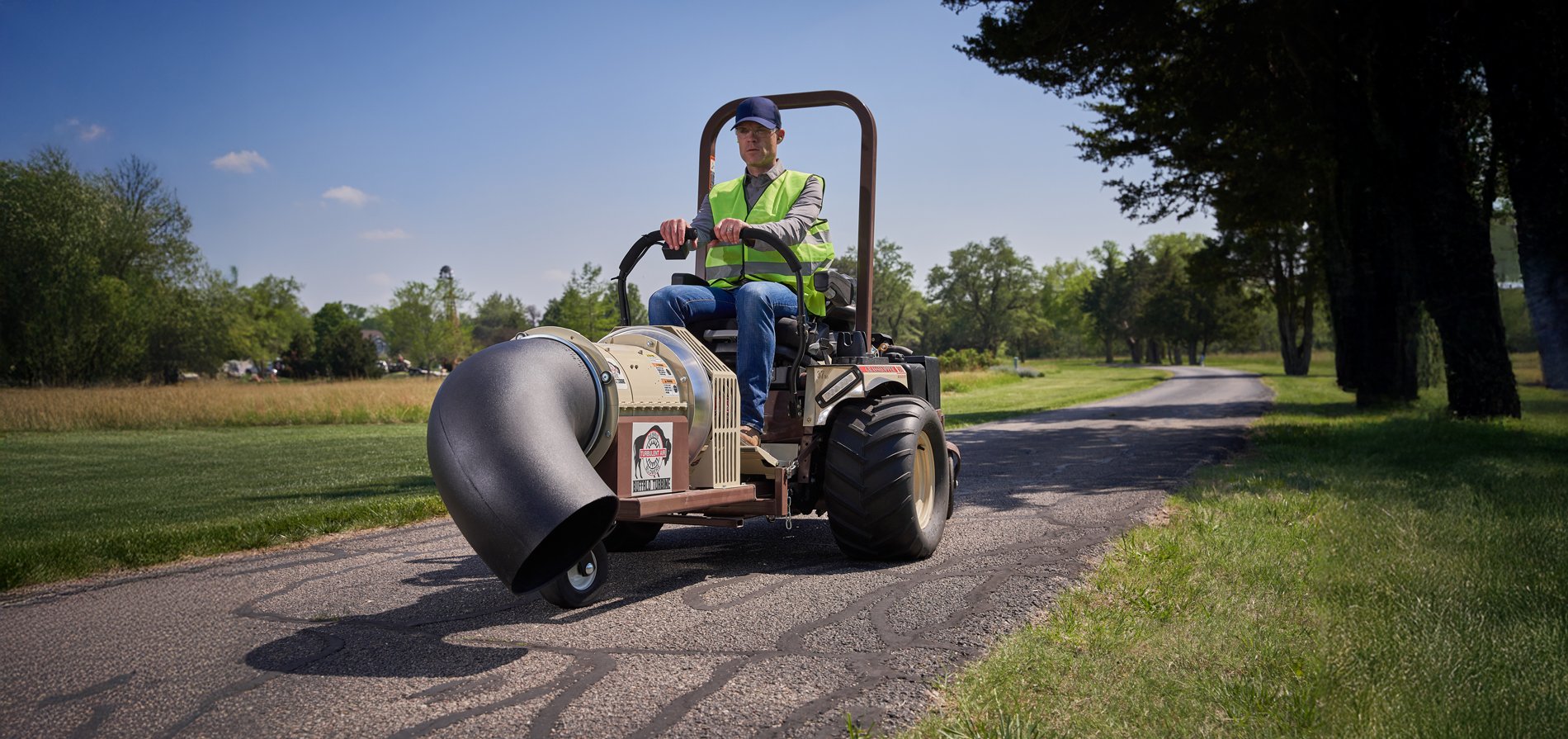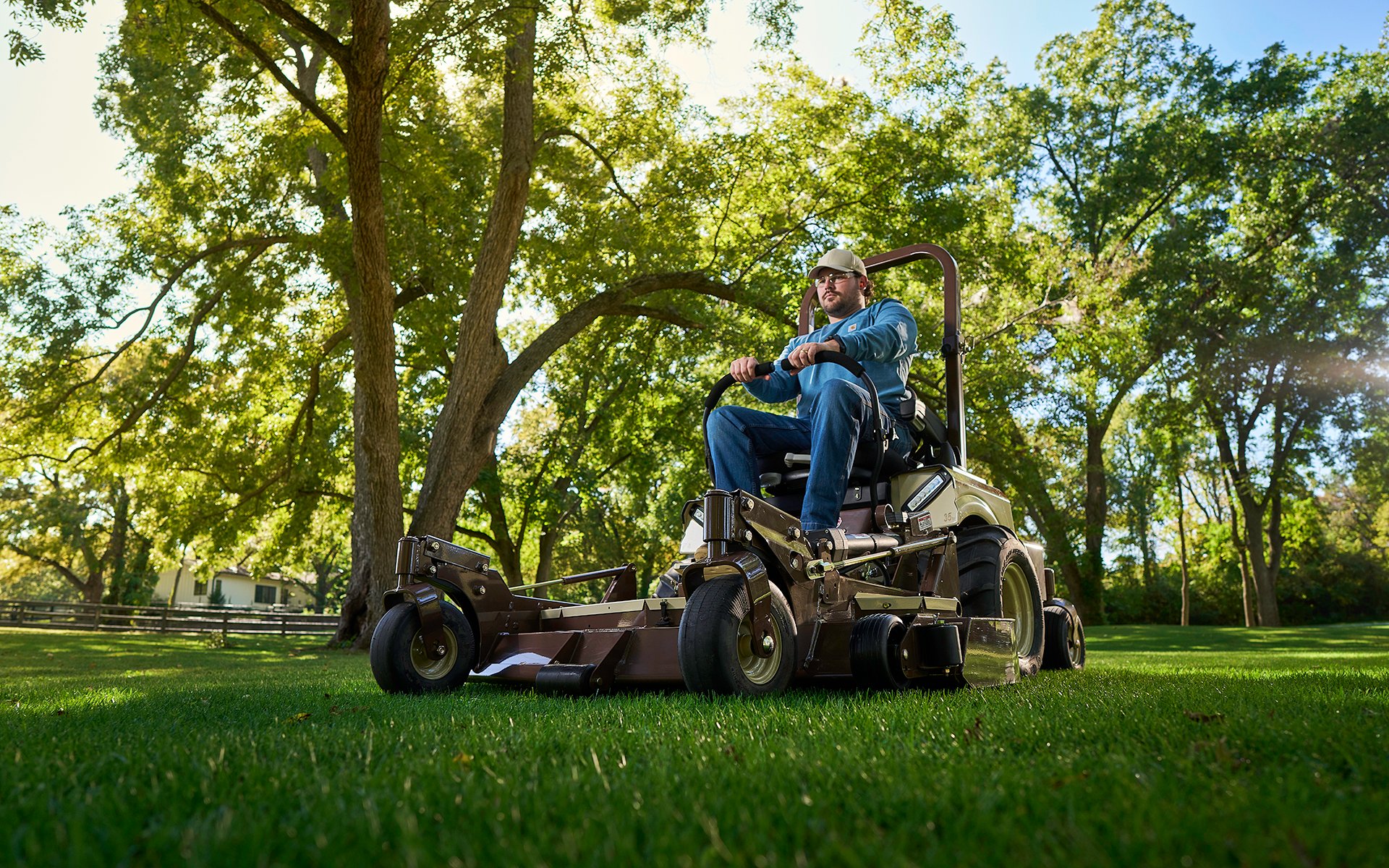Choosing the best zero-turn mower that fits your needs can be a complex decision.
Zero-turn mowers come in numerous sizes and classes, each with varying features and components. But which one is the best zero-turn mower for you?
Consider the following scenario.
A customer walks into an outdoor equipment dealer to replace his worn out garden tractor with a new zero-turn mower. He knows a zero-turn will cut the time it takes to mow his two-acre lawn significantly, but he hasn't done much research about brands, styles, sizes and options.
The salesman shows him a rainbow of different mowers. "This one has a top speed of 11 mph, but this other one tops out at 15," the salesman says. The customer doesn't see any visible differences between the two machines and buys the one that, on paper, will reduce his mowing time the most.
Did the customer pick the best zero-turn mower for his needs? He likely doesn't know that the "faster" mower will only save him an additional five minutes compared to the "slower" mower.
More importantly, he probably doesn't realize that maximum speed doesn't mean mowing speed. Mowing at the machine's highest ground speed will have a negative impact on cut quality, comfort and maneuvering, which will result in a less-than-pleasant operating experience.
So, if speed isn't everything, what should else should you consider when choosing the best zero-turn mower for you?
Zero-turn mower basics
First, there are two basic types of zero-turn mowers to choose from: mid-mount and front-mount.
A mid-mount zero-turn mower mounts the cutting deck under the operator's seated position and forward of the engine. The engine, drive system and drive tires are located at the rear. The operator rides above the deck and forward of the drive wheels and the zero-turn-radius pivot point. The deck is powered by a mule belt connecting the clutch (in the rear) to the deck.
A front-mount zero-turn mower - or out-front deck mower - mounts the cutting deck forward of the operator's seated position. The operator sits forward of the engine and above the drive tires, close to the zero-turn-radius pivot point. Front-mount mowers use a PTO-shaft to power the cutting deck. In addition, the deck can be removed easily for storage and maintenance, and replaced with a various implements like dozer blades, snowthrowers and rotary brooms.
If the area you mow are mostly open with few obstacles, a mid-mount mower would likely be sufficient. If there are numerous trees, fences or other obstacles to mow around that require hand-held trimming, a front-mount mower - with a low-profile, out-front cutting deck that can reach under and around obstacles - offers more versatility and reduces trimming time.
A front-mount zero-turn mower also offers the capability of performing other grounds maintenance tasks, like snow removal. The mower can be a year-round piece of equipment with only one engine to maintain, which can reduce maintenance costs as well as the need for extra pieces of stand-alone equipment.
Finding the best zero-turn mower
When choosing the best zero-turn mower, consider the following key features: the engine, the transmission and the cutting deck.
Engine
The engine should be commercial-grade. Some features that separate a commercial-grade engine from lesser-quality engines include a heavy-duty air cleaner, V-twin or three-cylinders, large displacement (cubic centimeters or cubic inches) and crankshaft alignment.
Many zero-turn mowers use a vertical crankshaft alignment, as it is less expensive to produce. However, horizontal crankshaft engines provide more uniform oil cooling, better airflow and better lubrication to increase durability and performance of the engine.
Transmission
All zero-turn mowers use a type of hydrostatic transmission, so understanding key transmission differences is important.
Transaxle transmissions feature a gear-reduction system and are typically found in entry- and mid-level zero-turn mowers. Gear-reduction drives, while less expensive, include moving internal parts that leach power from the engine and wear over time. Wear can deposit metal shavings in the hydrostatic oil, which can affect cooling, steering and response, and can lead to major system failures.
Typically, these drive systems require a break-in period for an initial fluid change, and regular fluid and filter changes every 200 to 500 hours.
All Grasshopper mowers are driven exclusively by fully hydraulic, pump-and-wheel-motor drive systems for exceptional performance, durability and responsiveness. These drives are "no gears" systems, so they provide more power to the cutting deck or implement. They are also better for cooling for longer component life and provide more responsive steering control and traction through turns.
Grasshopper drive systems only require service every 1,000 hours. This greatly reduces maintenance cost and lowers overall cost of ownership. Grasshopper drive systems are also well-balanced for ample speed when mowing - not just faster ground speed. This provides for a superior cut quality.
Cutting Deck
Two fundamental categories of cutting decks exist - fabricated and stamped - and quality among them can vary greatly. Most commercial mower decks are fabricated to offer more durability, and reinforced in critical areas to extend life and protect against impacts.
Grasshopper zero-turn mower decks are fully fabricated and feature reinforcements wrapped under the edge of the deck for greater strength. An additional top layer of low-gauge (thicker) steel across the spindle plane makes the decks stronger, too.
In larger cutting decks - 48-inches and wider - deeper chambers of five to 5.5 inches provide better airflow to handle clippings and debris.
Other factors to consider
While the three areas covered above are the most important, there are other features to consider when choosing the best zero-turn mower for you.
Safety is critical, so your next zero-turn mower should have a ROPS (rollover protection structure). Not only does a ROPS help protect you and give you peace-of-mind, it is also required in order to comply with local, state and federal standards for workplace and worker safety.
Consider that saving a few hundred dollars at the time of purchase could cost you much more in maintenance and parts in the first year. Be sure to request a copy of the maintenance intervals and evaluate maintenance cycles carefully.
Parts availability and the reputation of the local Grasshopper mower dealer are factors. When you need parts or service, you'll want a dealer with the good product knowledge and solid manufacturer support.
Choosing the best zero-turn mower for you can be a complex process, but it doesn't have to be. Using the strategies above will make your next zero-turn mower purchase less time-consuming and more valuable to you, your lawn and your budget.




